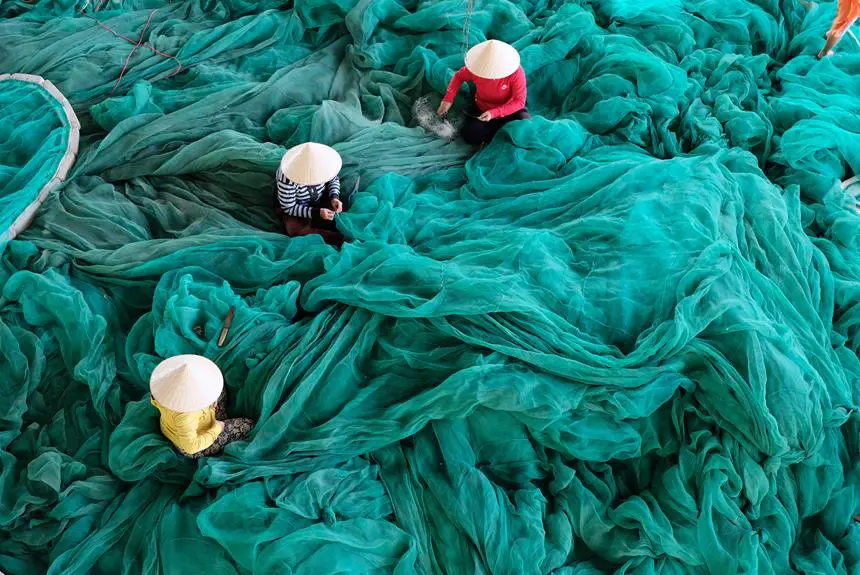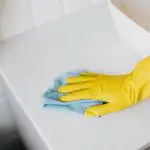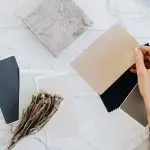When it comes to sewing, finding the perfect adhesive for your fabric is like finding the right tool for the job. With so many options available, it can be overwhelming to choose the best one.
But fear not, as we've got you covered. In this comparison, we'll explore the pros and cons of five popular sewing adhesives, helping you master the art of fabric bonding.
Whether you're tackling a delicate silk or a sturdy denim, understanding the strengths and weaknesses of each adhesive will empower you to make the best choice for your project.
Let's dive in and discover which sewing adhesive will elevate your fabric creations to the next level.
Key Takeaways
- Heat-activated adhesives provide a strong and durable bond, and can withstand heat and washing.
- Spray adhesives are a temporary bond before sewing and can be used for quilting, appliqué, and basting.
- Fusible web adhesives should be chosen based on fabric weight, stretch, and fiber content, and require even pressure and heat from an iron for application.
- Liquid fabric glues offer a strong and flexible bond, and are clear when dry, but drying time and washability should be considered.
Heat-Activated Adhesives
You should consider using a heat-activated adhesive for your fabric projects if you require a strong and durable bond that can withstand heat and washing. Heat-activated adhesives, also known as 'thermoplastic adhesives,' are applied in solid form and activated by heat to create a bond.
The bonding process involves heating the adhesive to its activation temperature, then applying pressure to adhere the fabric layers together. This type of adhesive is particularly suitable for projects that need to endure high temperatures, such as in clothing that requires frequent washing and ironing.
It's essential to pay attention to the temperature requirements of the heat-activated adhesive you choose. Different adhesives have varying activation temperatures, and using the correct temperature is crucial for a successful bond. Be sure to follow the manufacturer's instructions regarding the heat settings and application process to achieve the best results. Additionally, be mindful of the fabric's tolerance to heat to avoid any damage during the bonding process.
When using heat-activated adhesives, ensure that you work in a well-ventilated area and follow safety precautions, as heat is involved in the activation process. With the right temperature control and application technique, heat-activated adhesives can provide a reliable and long-lasting bond for your fabric projects.
Spray Adhesives
Consider spray adhesives for fabric projects where a temporary bond is needed before sewing or for applications requiring even coverage. Spray adhesives offer convenience and versatility, making them a popular choice among sewers.
When using spray adhesives, it's important to apply them in a well-ventilated area and protect surrounding surfaces from overspray. To ensure even coverage, hold the can approximately 6-8 inches away from the fabric and spray in a steady, sweeping motion.
One of the key advantages of spray adhesives is their ability to provide a temporary bond, allowing you to reposition fabric pieces as needed before sewing. Additionally, they can be used for quilting, appliqué, and basting. However, it's important to note that some spray adhesives may leave a residue on the fabric or cause stiffness, so it's advisable to test the adhesive on a small, inconspicuous area before full application.
When it comes to compatibility with different fabric types, spray adhesives are generally suitable for a wide range of fabrics, including cotton, polyester, and blends. However, it's essential to check the manufacturer's recommendations and test the adhesive on a scrap piece of fabric to ensure compatibility and avoid any potential damage.
Fusible Web Adhesives
When using fusible web adhesives, ensure that the iron is set to the appropriate temperature for the fabric. Fusible web techniques offer a convenient way to bond fabrics without the need for sewing.
Here are some key points to consider when using fusible web adhesives:
- Selection: Choose the right type of fusible web adhesive based on the fabric you're working with. Consider factors such as weight, stretch, and fiber content.
- Preparation: Before applying the adhesive, ensure that the fabric is clean and free from wrinkles. Pre-washing the fabric can help prevent any unexpected shrinkage after bonding.
- Application: Carefully follow the manufacturer's instructions for applying the fusible web adhesive. Use a pressing cloth to protect the fabric surface and avoid direct contact with the iron.
- Bonding: Apply even pressure and hold the iron in place for the recommended duration to ensure a strong bond between the fabrics.
- Testing: After bonding, test the strength of the bond by gently pulling the fabric layers apart. If necessary, reapply heat and pressure to improve the bond.
Mastering these fabric bonding techniques will enable you to create professional-looking, durable fabric projects with ease.
Liquid Fabric Glues
After using fusible web adhesives, it may be beneficial to explore the option of liquid fabric glues for bonding fabrics without sewing. Liquid fabric glues offer several benefits for various fabric projects.
One of the main advantages of using liquid fabric glue is its ability to create a strong, flexible bond that's machine washable. This makes it an excellent choice for creating hems, appliqués, and other fabric embellishments.
Additionally, liquid fabric glues are often clear when dry, making them ideal for projects where the adhesive needs to be invisible. When comparing different brands of liquid fabric glue, it's important to consider factors such as drying time, washability, and whether the glue is suitable for different types of fabrics.
Some popular brands to consider include Aleene's Original Tacky Glue, Beacon Fabri-Tac, and Dritz Unique Stitch. Each brand may have its own unique features and benefits, so it's essential to evaluate them based on your specific project needs.
Double-Sided Fabric Tape
Double-sided fabric tape provides a convenient and quick alternative for bonding fabrics without the need for sewing. This versatile adhesive is a game-changer for various fabric projects, offering a strong bond and ease of use.
When considering fabric tape alternatives, double-sided fabric tape stands out as a reliable option, especially for those looking to achieve professional-looking results without traditional sewing techniques.
Here are some key aspects to consider when using double-sided fabric tape:
- Versatility: Double-sided fabric tape is suitable for various fabrics, providing a flexible solution for a wide range of projects.
- Ease of Use: This adhesive offers a hassle-free application process, making it ideal for quick fixes and temporary fabric bonds.
- Precision Bonding: With double-sided fabric tape, you can achieve precise and clean bonds without the need for needles and thread.
- Washable Properties: Many double-sided fabric tapes are designed to withstand washing, ensuring that your fabric creations remain durable over time.
- Time-Saving: Sewing without sewing becomes a reality with double-sided fabric tape, saving you valuable time while still producing professional results.
With these advantages, double-sided fabric tape proves to be a valuable addition to any sewing or crafting toolkit, offering an efficient and effective way to bond fabrics.
Frequently Asked Questions
Can I Use Any of These Adhesives for Leather or Vinyl Fabrics?
You can use specific leather adhesives and vinyl adhesives for fabric bonding, ensuring adhesive strength. These adhesives are designed for the unique properties of leather and vinyl, providing a secure and durable bond.
Are These Adhesives Machine Washable and Dry Cleanable?
Yes, these adhesives are machine washable and dry cleanable, ensuring durability. Their bonding strength varies based on fabric compatibility. You can confidently use them for your projects, knowing they'll withstand cleaning processes.
Can These Adhesives Be Used for Outdoor Fabrics or Upholstery?
For outdoor upholstery, adhesive durability is key. Look for options specifically designed for outdoor use, with strong resistance to weather and UV exposure. Consider adhesives like fabric glue, fabric tape, or outdoor adhesive sprays.
Do Any of These Adhesives Work Well for Hemming or Mending Jeans and Other Heavy Denim Fabrics?
When hemming heavy denim fabrics, it's best to use a durable sewing adhesive. To mend jeans, apply the adhesive to the fabric edges and press them together firmly. Follow the product instructions for a secure hold.
Are Any of These Adhesives Safe to Use for Children's Clothing and Crafts?
Child friendly adhesives are crucial for craft project safety, ensuring no harmful chemicals are present. Always opt for non-toxic, water-based glue when working with kids' clothing or crafts. It's a simple way to prioritize safety and enjoyment.
- Tetron Fabric for Marine Applications: Durability and Use Cases - June 18, 2025
- Tetron Fabric for Outdoor Furniture: Weather Resistance and Care - June 18, 2025
- Tetron Fabric for Wall Coverings: Style and Application Tips - June 18, 2025





